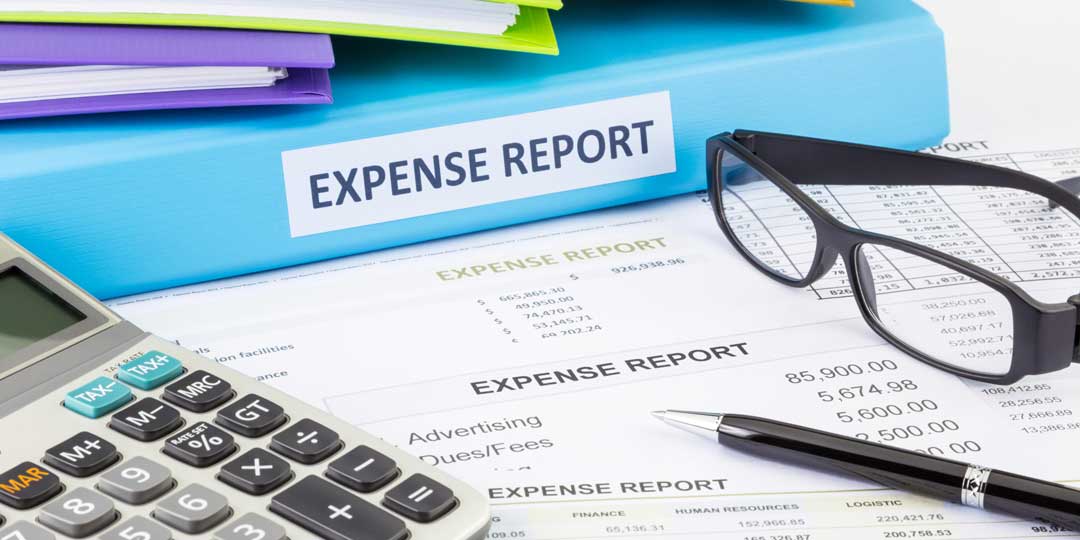
Small businesses regularly amass expenses connected to employee travel, meals, customer relations, and other necessary items.
The Canada Revenue Agency (CRA) provides an extensive list of acceptable business expenses. According to the law, businesses are required to save all of their receipts (and financial documents), therefore, you should have a good internal audit process; to evaluate the validity of said receipts.
This process includes auditing data entries (particularly manual entries), gathering receipts from employees, confirming employee banking details, and recording other business-related expenses.
Internal Expense Report Auditing
There are several forms of expenses, you can deduct. The most common being:
- Advertising
- Business start-up costs
- Insurance
- Office supplies and utilities
- Maintenance and repairs
- Property taxes and rent
- Travel
- Insurance policies
- Contractor salaries
Businesses should consider developing a procedure for, periodically, reviewing and auditing common expenses, as a batch file. An advantage of the batch process is, it avoids errors in data entry. You can simply sort each batch, by batch number, making the expense report internal auditing process, more efficient.
Moreover, you can process all expenses, at the same time, using an accounting or expense tracking program.
Internal Audit Procedures
An internal audit provides a systematic approach to assessing the processes and controls of your business. Thankfully, hiring an outside consultant to complete an audit of your business, is not needed. The best audit methods are unobtrusive and, essentially, hidden from those involved in the auditing process.
The audit process should be continuous and seamless, while the emphasis should be on the financial data that is being entered into your computer system. Tracking and verifying expense receipts and bank transfers is also a vital part of auditing.
Periodically implementing new audit plans may assist you in discovering problems within your business operations. Developing multiple internal auditing processes may be difficult, however, doing so is very important, as it can save you a lot of time and hassle. Using various auditing methods increases your chances of finding and correcting unnecessary business expenses, this, in turn, increases your bottom line.
Examples: Internal Audit Procedures for Expenses
Your business’ auditing practices must include examining documents that confirm that the owner, business partner, or employee completed a specific process or transaction. It’s also important to gather specific information related to the transaction; an example of this is as follows:
- To subtract the cost of an airline ticket, you must collect the ticket and boarding pass, as verification. A member of your business may purchase a flight but later cancel for a refund. As a result, it’s important to verify both documents
It’s also important to verify multiple receipts issued from the same business. Similar dates and times stamps could indicate that something is incorrect; an example of this is as follows:
- An employee may have collected a receipt from another person leaving the store at the same time. Suppose a sales manager submits a receipt for a group dinner and starts an internal audit to analyze the expense reports. If someone else also submitted a receipt for the same meal, it could be viewed as fraudulent activity
Unfortunately, it is not unusual for members of a business to be dishonest, as a result, analyzing everyone’s business expenses, regularly, is necessary.
Although internal auditing may seem tedious and time-consuming, it could save your company a great deal of money and keep your financial health in good condition. Maintaining a good audit process for reviewing expense reports, prevents fraudulent activity, and reduces the likelihood, you’ll receive a negative business audit from the CRA.
CRA Business Audit Red Flag
The Canada Revenue Agency conducts business audits on deductions, this is to ensure ledgers, journals, invoices, bank statements, and receipts are well-documented. This includes business-related personal and family records.
Concerning deductions, large and/or unusual charges are viewed as red flags. Similarly, claiming large home-office deductions or 100% business use of a personal vehicle, are also viewed as red flags. Therefore, it is in the best interest of you and your company to create regular simple internal audit procedures, to ensure ‘red flags’ do not occur.
Source: Intuit
Newsletters
No Results Found
The page you requested could not be found. Try refining your search, or use the navigation above to locate the post.
Events & Sponsorship
No Results Found
The page you requested could not be found. Try refining your search, or use the navigation above to locate the post.
Articles & Publications
Tax changes for 2020
The government recently announced increases to the basic personal amount for 2020 and subsequent years beyond the normal inflationary adjustment. Let’s take a look at some of the new tax numbers coming for 2020. ANNUAL INFLATION ADJUSTMENT Each year, most income tax...
Nearly a million Canadian bank records sent to IRS
Number of government transfers of records of bank accounts held by Canadian residents to U.S. has been rising The Canada Revenue Agency sent 900,000 financial records belonging to Canadian residents to the Internal Revenue Service in September — nearly a third more...
Basics of Sales Tax
Basics of Sales Tax The GST/HST and QST are governed by a complex set of rules and regulations as set out by the excise tax (ETA). This article is a good starting point to understanding these rules.Fundamental terms for the sales tax Basic Charging Provision...
Do I Need to Charge GST/HST?
Do I Need to Charge GST/HST? Just started your own business? Congrats and welcome to the world of being your own boss! According to Statistics Canada, you can now count yourself among the other 2.7 million Canadians who are living the self-employed dream.If...
Notice of Assessment, Notice of Reassessment, Request for Information and Audit
Notice of Assessment, Notice of Reassessment, Request for Information and Audit. If you’ve just opened your mailbox and have a notification from the Canada Revenue Agency’s MyAccount, don’t be intimidated. Here’s what you need to know about the different types...